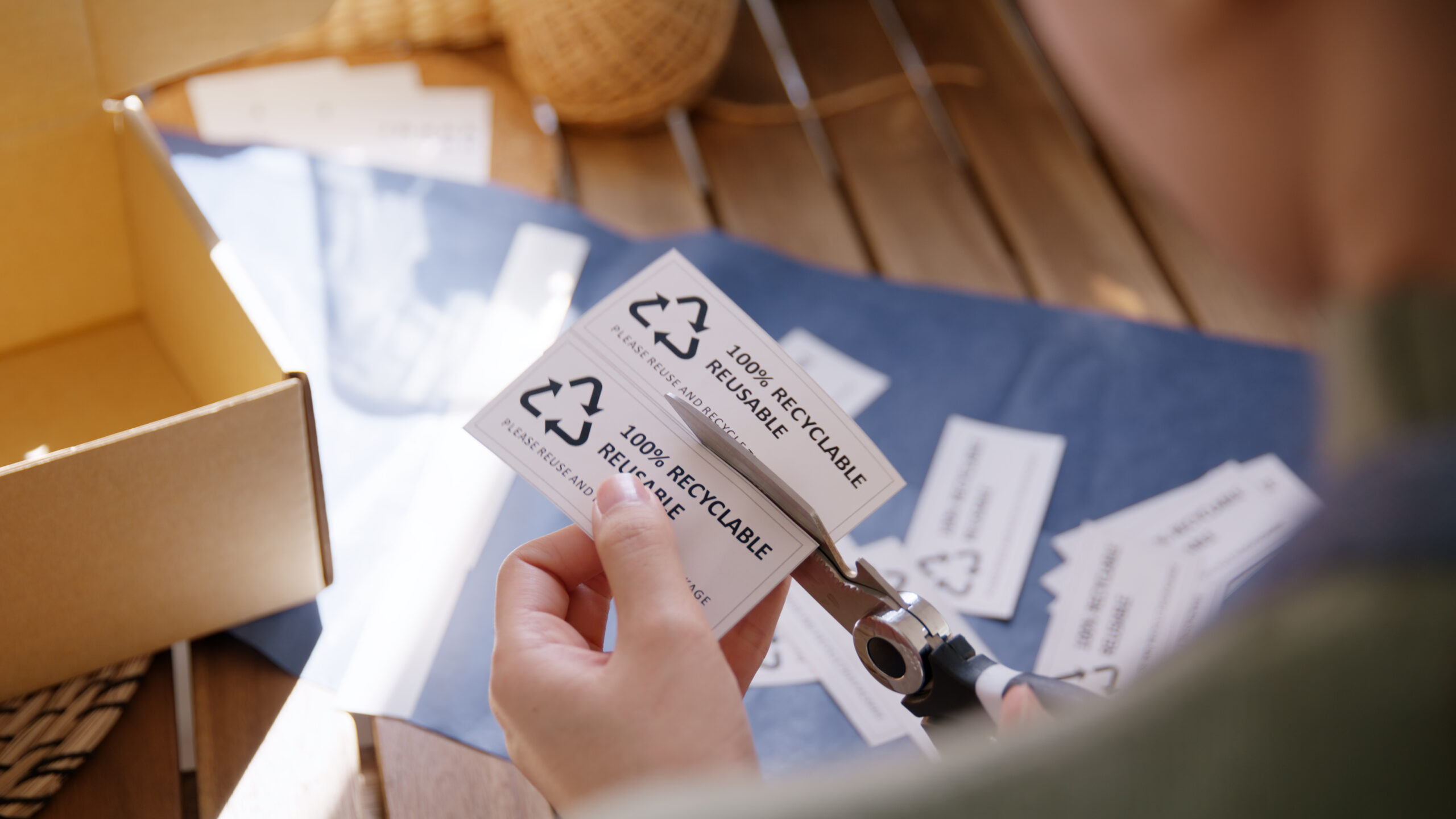When you think of sustainable businesses, you might picture a giant corporation with a big budget. But your small business may have as much or more to gain by adopting greener practices. Sustainability isn’t just about helping the planet; it’s a smart business move that can cut costs, attract customers, retain employees, and strengthen your reputation in the community.
Jump to:
Why Sustainability Matters for Small Businesses
- Cost Savings: Simple steps like upgrading to LED lighting, installing smart thermostats, or reducing waste can lower utility bills and supply costs.
- Customer Demand: Today’s consumers are eco-conscious and want their spending to reflect their values. According to a 2021 survey by IBM, half of consumers are willing to pay a premium for sustainable products and brands, and 60% of consumers say socially responsible or sustainable products made up at least half of their last purchase.
- Competitive Advantage: In a crowded marketplace, your green practices distinguish you from competitors. The IBM study indicates that 49% of consumers have paid an average of 59% more for products branded as sustainable or socially responsible in the previous 12 months.
- Employee Retention: 68% of IBM’s respondents say they’re more inclined to apply for jobs at a sustainable company. A third of those surveyed who changed employers in the previous year say they took an average pay cut of 28% to work for sustainable or socially responsible organizations.
- Community Reputation: Small businesses are community anchors, and your leadership on environmental issues can cultivate trust and ensure loyalty. Your green efforts demonstrate your values and emphasize that you care about your community and your region.
Michael Oshman, founder and CEO of the Green Restaurant Association, says that 78% of employees prefer working at certified green restaurants and 79% of consumers prefer dining at certified green restaurants.
Getting Started as a Sustainable Small Business
Start small by focusing on one or two aspects of your business which can deliver the most bang for your buck. Once you’ve met your goal, celebrate! Then select a new area to target.
Consider joining a green business association. They provide tools and valuable networking and may offer accreditation. “Our mission is to make it easy and practical” to be sustainable, says Oshman of the GRA. In addition to being a resource for best practices, the GRA helps “identify real solutions within members’ current distributors and vendors.”
Abundant free resources are easy to find online. Check out the Smart Steps to Sustainability digital guide from the EPA (Environmental Protection Agency). The EPA small business page links to multiple programs such as WaterSense (plumbing efficiency); Green Power Partnership; Energy Star; SmartWay (freight transportation); and GreenChill, (refrigerant emissions). Check your state, county, and city for more resources.
Perform a self-audit of your environmental impact. Set up a “green team” of employees who are enthusiastic about sustainability, and empower them to take charge.
Practical Ways to Be More Sustainable as a Small Business
Here are the main areas to target.
Energy Conservation
- Power-saving practices (turn off equipment after hours, use motion-sensor lighting).
- Switch to renewable energy (green power plans, rooftop solar, community solar).
- Upgrade to energy-efficient equipment (LED lighting, ENERGY STAR appliances, smart thermostats).
Water Conservation
- Install low-flow faucets and toilets.
- Fix leaks promptly.
- Use drought-tolerant landscaping.
Waste Reduction
- Buy in bulk.
- Eliminate single-use plastics.
- Go paperless.
- Set up recycling and composting.
- Reduce packaging waste.
Supply Chain and Sourcing
- Select sustainable materials (recycled, certified, or responsibly sourced).
- Use local suppliers to cut transport emissions and keep money in the community.
- Audit suppliers for eco-friendly practices.
Transportation and Logistics
- Offer incentives for employees who walk, bike, or use public transit.
- Adopt efficient delivery methods (optimize routes, use EVs or bike couriers when possible).
- Reduce commuting with remote work or hybrid schedules.
Products and Services
- Make your products eco-friendly (reusable, repairable, and long-lasting).
- Offer recycling take-back programs for broken products.
- Educate customers on how to use products more sustainably.
- Offer repairs or empower customers to repair.
Oshman says GRA advises restaurants to stop handing out disposables — cutlery, napkins, ketchup, etc. — with takeout and delivery orders, and customers opt in for them instead.
“A restaurant can save over $5,000 in some scenarios,” he says.
He also notes that it’s quite common for restaurants to save thousands of dollars in water and energy by instituting green practices.
“In some areas of the county,” Oshman says, “it is actually cheaper to recycle and compost than to throw your garbage away.”
Success Story: Birdsmouth Construction
Josh Salinger owns Birdsmouth, a green building company in Portland, Oregon. His all-electric Ford F-150 “matches with our mission, so it shows that we’re actually walking our talk.” There’s “significantly less cost when it comes to maintenance. It’s like windshield wipers, windshield wiper fluid. It just doesn’t need oil changes and all the other stuff that goes along with fossil fuel vehicles.”
His credit union discounted his loan because it’s an EV. Workers can run tools off the truck from outlets in the bed, instead of paying $5,000-$7,500 each time they need temporary power at a worksite.
“There’s no question that people seek us out because of our sustainability,” says Salinger. “If we pay a premium for any of our sustainable work, which is debatable, I would call that the cheapest ROI for any marketing that I’ve ever come across. There’s no question that it sets us apart. In a highly resource-intensive industry like this, people are looking for that. And there’s no question that we are getting more work because of it. We also get a lot more resumes from a lot more qualified people, due to the fact that we’ve really committed to sustainability at the core of our business.”
About 90% of his employees hold some kind of sustainability certificate.
His advice for getting started: “Put sustainability in your mission statement. Our mission statement is ‘climate action through the built environment.’ If you center sustainability in the core of your mission, then everything will follow from there.”
Success Story: Mama & Hapa’s Zero Waste Shop
Ross Ching founded one of the first zero-waste stores in Portland, Oregon. Customers fill their own containers with cleaning or personal care products in a bright, tidy shop. An easy RFID card system simplifies measuring and weighing.
Ching now operates four locations, “so you don’t have to travel very far to get to our store, because if you spend half a gallon of gas to get here, what’s the point of saving a plastic bottle here and there?”
He buys locally whenever possible. “Our liquids come in 500-pound barrels. So we try and get them locally so we can save on the carbon emissions.” He also relies on secondhand items for furnishings and checkout screens.
His advice: “The first step is to see what you’re capable of doing. We don’t need everybody to be perfect, we just need a lot of people to be semi-perfect. A lot of people think of it as this perfect bar that you have to reach and in actuality it’s like a ladder where every little step matters.”
For more case studies sorted by industry, check the EPA website.
The Bottom Line
Many sustainable practices are cost-effective and surprisingly simple. You don’t need a big budget or a major overhaul to get started. Begin with one or two small changes and build from there.
Sustainability is not a luxury accessible only to big corporations. It’s a smart, strategic move for small businesses too. By reducing costs, attracting eco-minded customers, and strengthening your community reputation, you’ll position your business for long-term success while making a positive impact on the planet.






